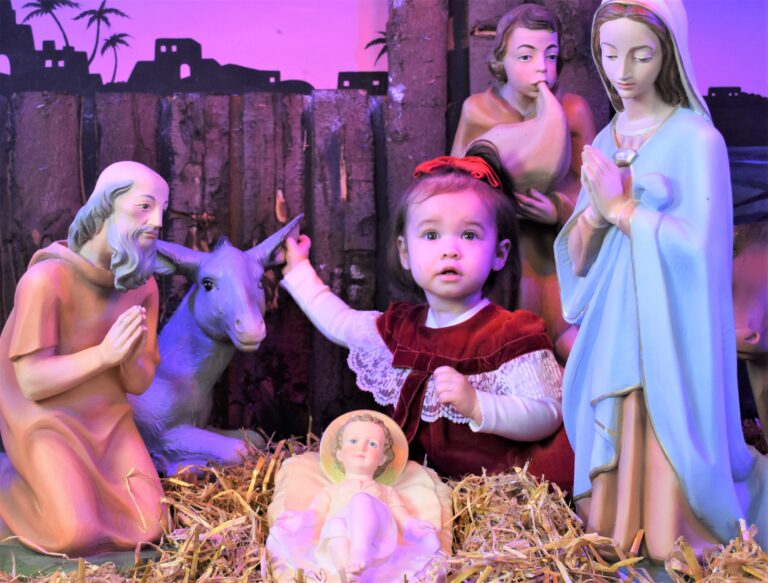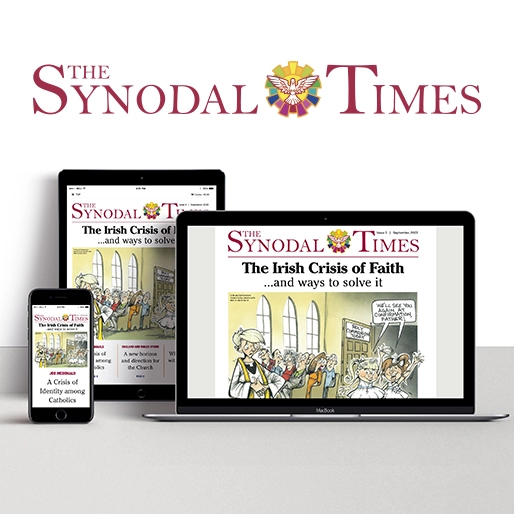The Lord Mayor of Dublin has expunged the grittiness of the live crib by excluding animals and has opted for a more bleached Disney like winter wonderland scene. I’m sure it will be a great draw. But we like gritty in The Synodal Times and that’s why our Christmas issue is a deep dive into the incarnation and all the grittiness of humanity which Jesus embraced.
Fr Joe McDonald writes that the real Jesus is often too much for us. “There may well be a wilful intention to keep the real Jesus under wraps? Better leave him there in the swaddling clothes. This Jesus is just too much! Too hot to handle. Too subversive.”
Fr Joe adds: “If we as a faith community, the Church, were to seriously live the gift of the Christ-child at Christmas it would bring us into a much more uneasy relationship with the state and indeed popular culture. We can’t really have that. It’s just too messy. Too unpredictable. The truth is, deep down we know that if we were to seriously live the crib this Christmas we would welcome many more Ukrainians, and others, and there would be room for them and they, and we, would have a Christmas of profound joy”.
Hellfire and brimstone
Not too long ago we heard of parishioners walking out of a church because of the ‘hellfire and brimstone’ homily aimed at homosexuals. In fact, worldwide Catholics have complained about the poor quality in general of Sunday homilies.
In an extract from an amazing new book called ‘Catholic Women Preach Raising Voices, Renewing the Church’, Barbara E. Reid, OP, reminds us that the first person commissioned to preach that Jesus had risen was Mary Magdalene, often described as an apostle to the Apostles, almost like a super apostle! Christine Schenk, CSJ preaches on the nativity from her perspective as a midwife and a woman. She asks where’s the midwife in the Nativity scene? “No one seriously thinks that Joseph, as devoted as he was, actually delivered this baby, do we?” The writer of the Gospel of Luke was clearly a man she says.
Diarmuid O’Murchu MSC takes up this theme and writes that despite what is written in the Gospel of John, it’s unlikely that Mary was left on her own to give birth with only Joseph and the animals. “Despite the fact that John’s Gospel asserts that Jesus came to his own and his own received him (Jn.1:11), not the contrary was probably the truth. Even if Jesus was born out of wedlock, which is how people would have understood the event in the real world of that time. Jewish hospitality was such that Joseph, and members of Joseph’s family would ensure that she gave birth in a safe place, with the attendant medical and human supports that would have been available.”
He goes on to say that the animals in the crib may be based in fact. “Therefore, in all probability Jesus was not born in a shepherd’s cave, but in a house provided by Joseph or by his close friends. In the social context of that time, normally everybody slept in one room, yet visitors, including unexpected ones were always accommodated. They would have been put in the downstairs section where the animals were also housed. Therefore, portraying Jesus in a crib surrounded by animals like a donkey, a cow, some sheep, may well be factually accurate.”
Fr O’Murchu calls on us, while making Christmas special for our kids, not to neglect the call to us as adults to understand the call to have an adult Christian faith. “Let’s not forget, however, that this infant figure of our Christian faith is the outcome of a birthing universe, destined to give birth to a new world of Gospel liberation and empowerment.
Central to that project are people who live out their faith in committed adult allegiance. While we continue to celebrate with our children, let’s hope that this Christmas will also help to awaken, and reinforce, the call to adult discipleship, so urgently needed in the church and world of our time.”
Peter Keenan discusses the way we should understand myth and not get caught up in what is literally true or not. “The purpose of myth” he writes “is not to provide information. It is to invite people to embrace truths that are as invisible as music yet as positive as sound, to paraphrase Emily Dickinson in a very different context. When, every year, we pray before nativity scenes, believers are participating in a powerful ritual reflecting the positive sounds of that first and invisible Silent Night. Christians know the Christmas story to be true, not because it conforms to a check- list of historical data but because of its power to transform lives.”
Invitation
Biblical Scholar Sean Goan takes a look at the Gospel of St Matthew and shows how Matthew invites his readers “to consider how God works through all the circumstances of life, even the most unpromising, to bring about his purposes. This is precisely what will happen in the adult life of Jesus who will pay the ultimate price for challenging people to recognise that what God wants is mercy not sacrifice”.
He concludes: “This Christmas as we continue on the synodal path, Matthew’s account of the birth of Jesus is a reminder to us that we are part of a long history of people who had to set aside their certainties in order to recognise how God is at work among them. This narrative is not child’s play –it is in fact a serious call to grow up!”
And finally, Aidan Matthews riffs on the theme of Mary and how over the centuries the real woman has been so often eclipsed by the Madonna. Luke, he writes, does justice to the real Mary. “But Luke, a bridesmaid among best men, is immersed in the mystery of Mary, which is why early Christian folklore came to believe he had painted her true likeness in the very first icon.”
He adds: “I have told my daughters about this daughter of Sarah, the Mother of God, and they are telling theirs. Faith in the female line may be more reliable: closer to Mary because closer to Martha, to the bloodshed and breastmilk of bodily life”.
And there we are, back to bodies and incarnation. Enjoy the clean crisp winter wonderlands this Christmas but remember that God is in the human stuff, the ‘smell of the sheep’ as Pope Francis likes to call it.
Emmanuel, God is with us. Happy Christmas.



